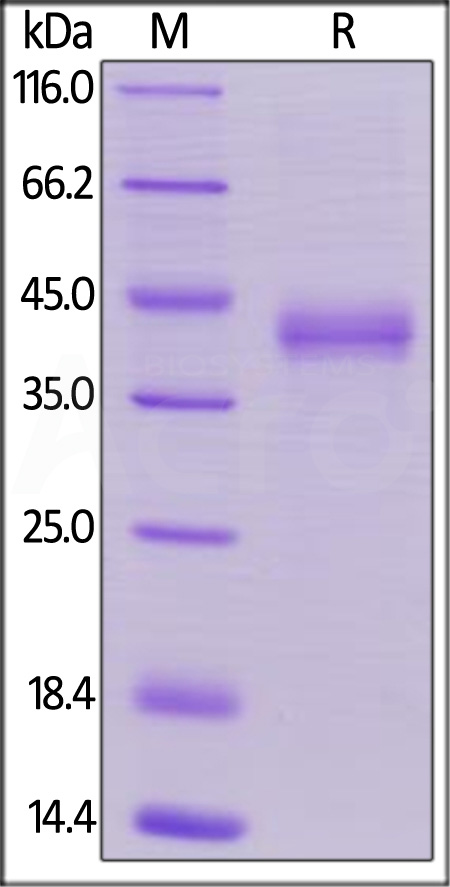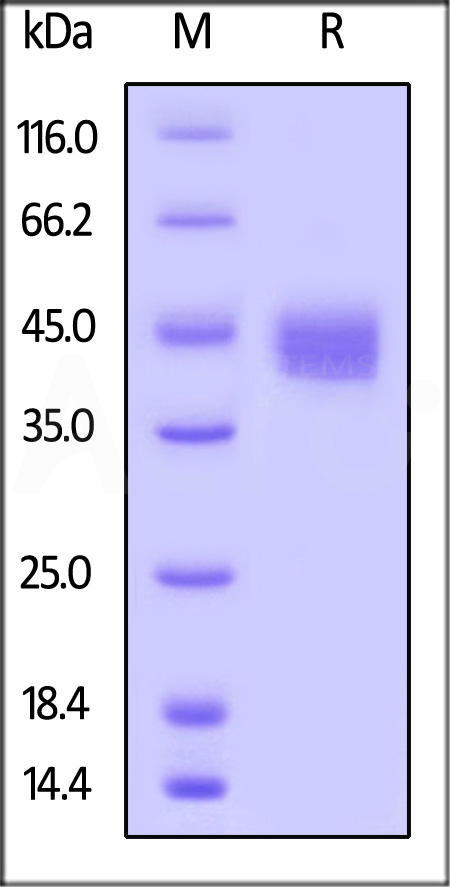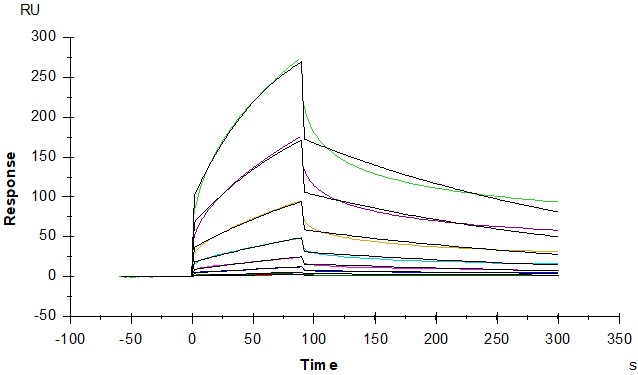 Limited Edition Golden Llama is here! Check out how you can get one.
Limited Edition Golden Llama is here! Check out how you can get one.  Limited Edition Golden Llama is here! Check out how you can get one.
Limited Edition Golden Llama is here! Check out how you can get one.
 Offering SPR-BLI Services - Proteins provided for free!
Offering SPR-BLI Services - Proteins provided for free!  Offering SPR-BLI Services - Proteins provided for free!
Offering SPR-BLI Services - Proteins provided for free!
 Here come GMP Grade Cytokines!Free Sample is available!
Here come GMP Grade Cytokines!Free Sample is available!  Here come GMP Grade Cytokines!Free Sample is available!
Here come GMP Grade Cytokines!Free Sample is available!
| 제품번호 | 종 | 제품 설명 | 구조 | 순도 | 특징 |
|---|---|---|---|---|---|
| CD3-H5249 | Human | Human CD23 / Fc epsilon RII Protein, His Tag (MALS verified) |  |

|
|
| CD3-H82Q5 | Human | Biotinylated Human CD23 / Fc epsilon RII Protein, His,Avitag™ (MALS & SPR verified) |  |

|

Biotinylated Human CD23, His,Avitag (Cat. No. CD3-H82Q5) captured on Biotin CAP-Series S Sensor Chip can bind Immunoglobulin E with an affinity constant of 326 nM as determined in a SPR assay (Biacore T200) (QC tested).

The purity of Human CD23, His Tag (Cat. No. CD3-H5249) is more than 90% and the molecular weight of this protein is around 32-48 kDa verified by SEC-MALS.
| Name | Research Code | Research Phase | Company | Indications | Clinical Trials |
|---|---|---|---|---|---|
| UB-221 | UB-221 | Phase 2 Clinical | Chinese Academy Of Sciences | Chronic Urticaria | Details |
| RO-7297089 | RO-7297089; AFM-26; RG-6296 | Phase 1 Clinical | Genentech Inc | Multiple Myeloma | Details |
| UB-221 | UB-221 | Phase 2 Clinical | Chinese Academy Of Sciences | Chronic Urticaria | Details |
| RO-7297089 | RO-7297089; AFM-26; RG-6296 | Phase 1 Clinical | Genentech Inc | Multiple Myeloma | Details |
This web search service is supported by Google Inc.
